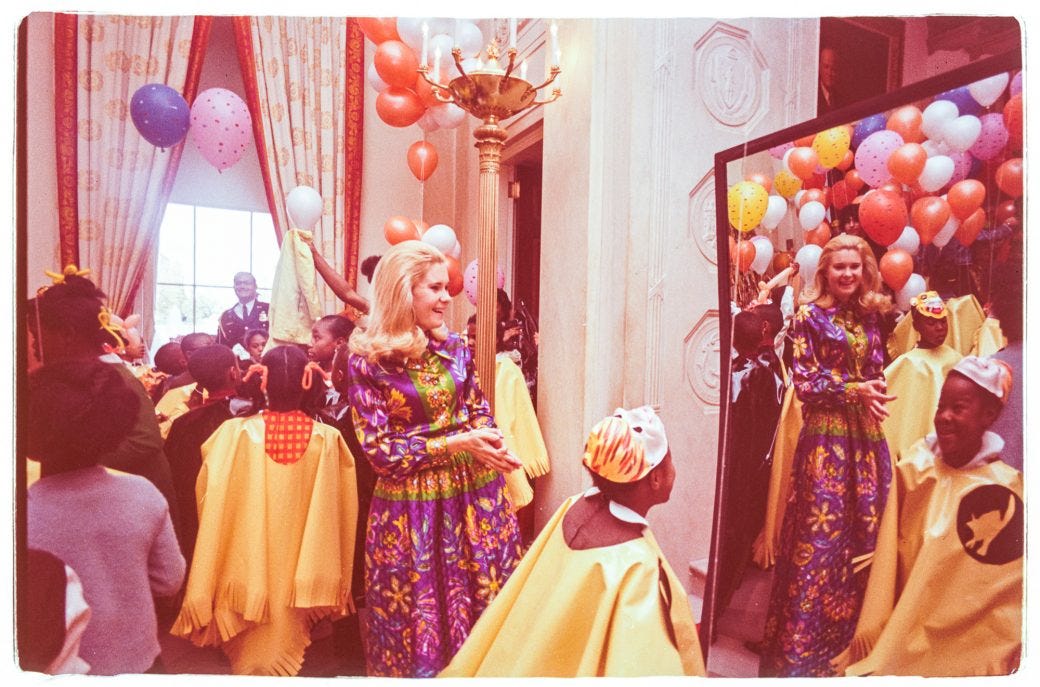
Mirrors play an unsettling central role in Jordan Peele’s latest horror movie, Us. (This newsletter is spoiler-free and not too creepy, so it’s safe to keep reading if you haven’t seen Us yet.) In the film’s opening scene, a little girl strays from her family’s strained outing to the Santa Cruz boardwalk. Young Adelaide wanders to the dark beach, where waves crash on the shore as the night sky pulses with lightning.
The clouds open in a sudden storm, so Adelaide takes shelter in a funhouse tucked beneath the boardwalk. While rain lashes the tiny building, she wanders deeper into the winding maze of mirrors.
We’ve been trained by countless other horror movies to watch this scene with a prickle of unease. In a memorable scene in Black Swan, Natalie Portman is disturbed during a costume fitting in which twin mirrors project a seemingly endless army of her own reflection — especially when one of the copies breaks formation and turns to meet her gaze. Poltergeist, The Shining and even Scooby Doo have all reinforced the idea that mirrors can reveal evil.
So why are funhouses full of them?

Most sources point to the Palace of Versailles as the most famous mirrored hallway. The Palace’s Hall of Mirrors was originally designed to flash France’s wealth in a taunt to Venetian manufacturers, who previously dominated the mirror-making industry. One side of the hallway features tall, grand windows that overlook gardens; across from them, 17 arches mimic the windows, using 357 individual mirrors to replicate the view.
Today, the scariest aspect of touring Versailles is the crowds, according to these Trip Advisor reviewers who gave the Hall of Mirrors one star. (Though I’d argue that their subtly racist comments are probably scarier.) But Versailles’ appeal lies in its opulence, not in its ability to frighten.
Still, Versailles’ Hall of Mirrors sparked the most enduring myth about the origins of America’s funhouse mirrors. According to legend, a man named Peter Stuyvesant paid the Hall a visit in 1647 while in France to negotiate a colonial land agreement. (He was the governor of New Amsterdam, which would later become New York.) Back home in America, Stuyvesant opened his own House of Mirrors in 1651, charging a modest fee for entrance into the novel attraction.
Unfortunately, not a word of it is true. None of the available written records from the periods mention this type of mirror, and Stuyvesant isn’t known to have ever set foot in France. The final piece of evidence is also the most damning: Versailles’ Hall of Mirrors was completed in 1678 — six years after Stuyvesant’s death. If he visited the palace and brought its famous mirrors back to America, he did so as a ghost or a zombie.
But despite two days of Googling, I couldn’t find an alternative explanation for why we fill carnival funhouses with mirrors or who set us down this path. (If you happen to know, please tell me!)
I did manage to find a 2010 psychology study that helps explain why we find mirrors so fascinating — and creepy. Researchers at Italy’s University of Urbino instructed participants to stare at their own reflections for ten minutes in a dimly lit room. The results were startling: 66 percent of participants watched their faces seemingly deform before their eyes. Nearly half saw strange, monstrous beings, and nearly one-third claimed that they saw a stranger.
These tricks of perception occur thanks to our brains’ selective processing. After staring at an image for a short period of time, the brain begins to block out details it deems unimportant, causing our reflections to appear uncanny or distorted. If nothing else, it helps explain why people about to drop LSD are warned never to look at their own reflections while tripping.

The Nixon White House rented a warped funhouse mirror for a Halloween carnival in 1969, and you can, too, thanks to companies like Zebra Entertainment and Events. The company offers three different variations: a Mardi Gras theme, a Wizard of Oz theme and something inexplicably called “Cindy’s Dog House.” The mirrored funhouses are intentionally maddening mazes, sometimes swapping mirrors for clear glass panes that allow glimpses of areas people can’t actually access.
But if you’re interested, you better move fast. “This Fun House gets very booked up, many times out of town,” the Mardi Gras funhouse description warns, “so it’s not often available.”
I guess we can’t resist the spookiness.
Something else
Last week, DC-based journalist and cartoonist Josh Kramer published one of my favorite stories of the year so far. He toured government cafeterias, and his observations about how our government workers eat are revealing:

You can read the full piece over on The Guardian!


